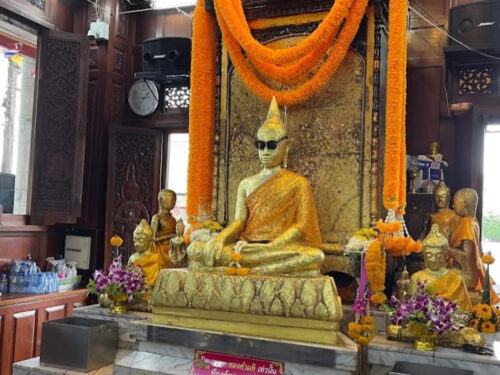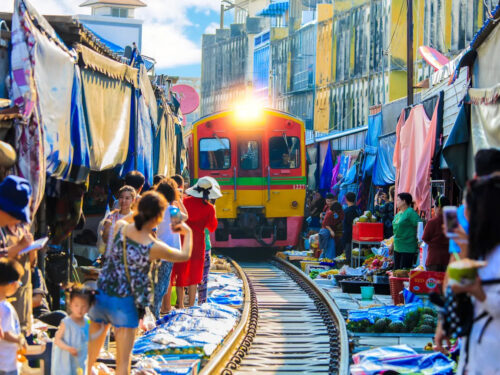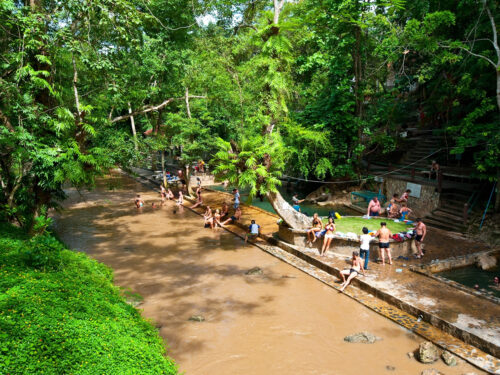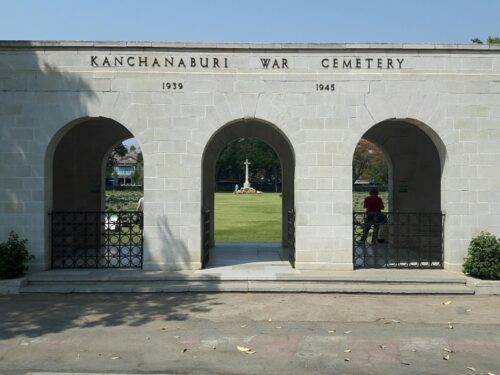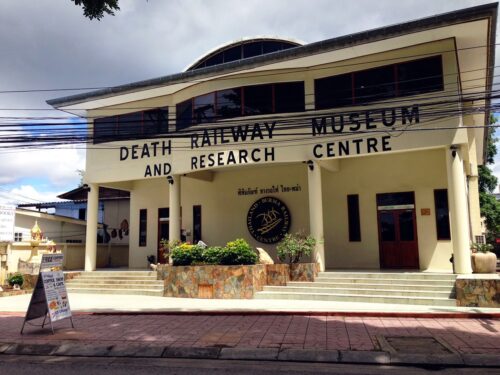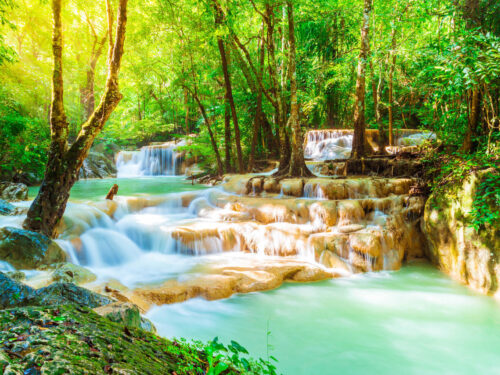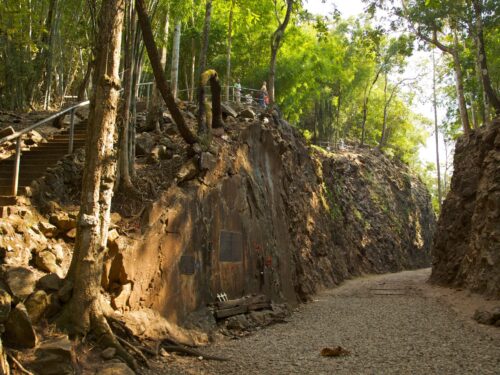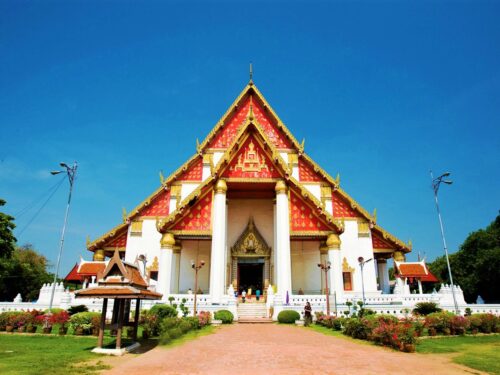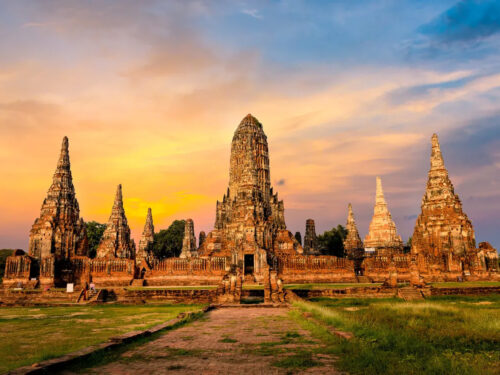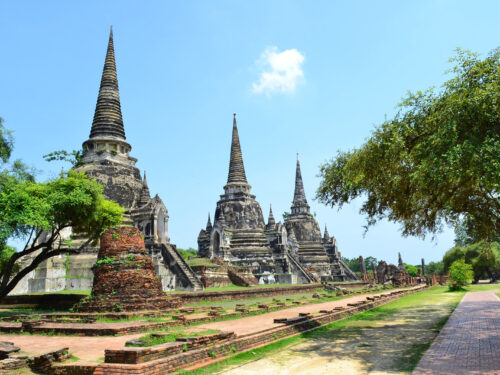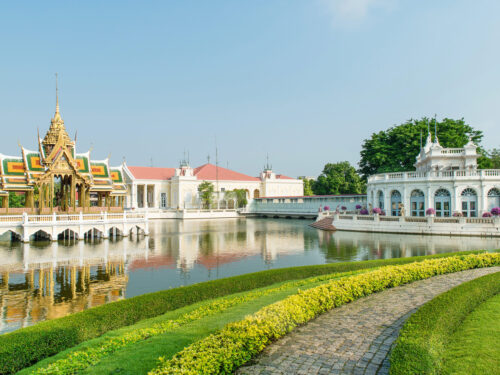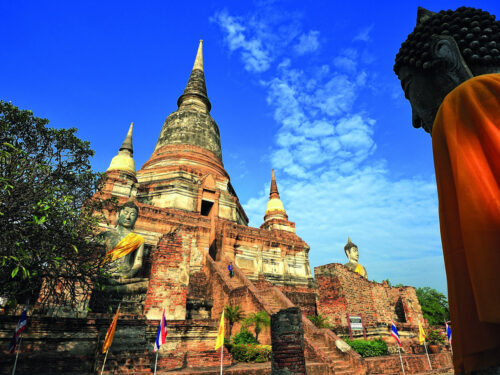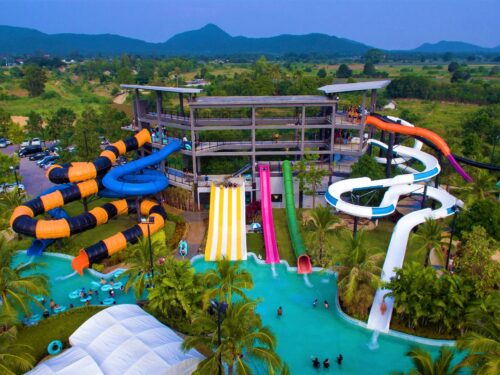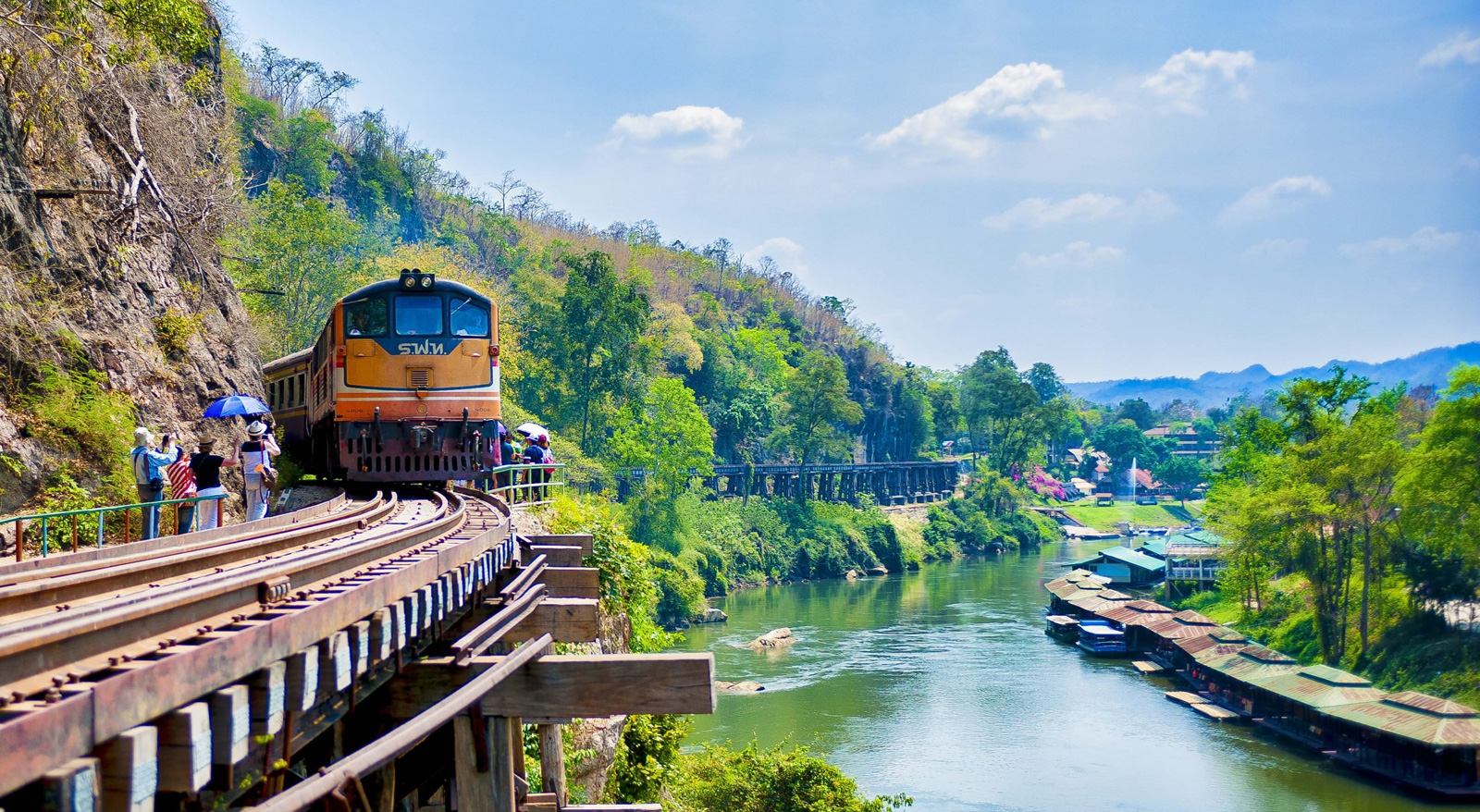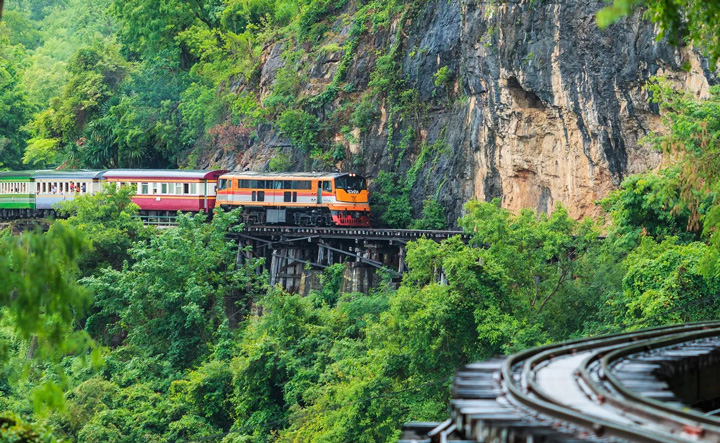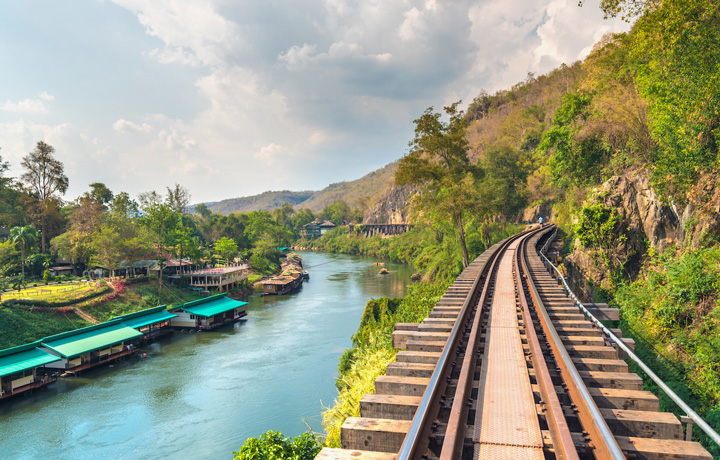Death Railway, Kanchanaburi
The Death Railway stands as a grim testament to a harrowing chapter in Thailand’s history, forged through the toil and suffering of prisoners of war and enslaved Asian laborers during World War II.
The train still operates as a regular Thai regional train, and also allows tourists and survivors to visit the museums and memorials at Kanchanaburi and Hellfire Pass, the River Kwai Bridge and nearby Erawan National Park.
A short history of Death Railway
In the midst of the global conflict, the Imperial Japanese Army had established its dominance over Southeast Asia, taking control of vast territories and capturing tens of thousands of able-bodied prisoners of war. These POWs became laborers, forced to support the Japanese war machine in various endeavors.
One of the most significant projects these POWs were coerced into was the construction of a railway. Alongside countless Asian laborers seeking work, they were assigned the arduous task of building a railway line that originated in Thailand and extended into the Burmese war zone, serving the Japanese invasion of India.
Originally named the Thailand-Burma Railway, it earned its chilling moniker, the “Death Railway,” due to the staggering loss of life during its rapid construction between 1942 and 1943. Over one hundred thousand laborers perished during the intense 16-month period. Spanning 250 miles from Ban Pong, Thailand to Thanbyuzayat, Burma, the railway claimed even more lives among those who remained in the POW camps until 1945.
The laborers endured wretched conditions, tormented by scorching heat and relentless monsoons. They faced woefully inadequate sanitation, scarce medical supplies, and brutal mistreatment from Japanese and Korean guards, which further compounded the abysmal working environment. Exhaustion, dysentery, infections, and malnutrition proved fatal for the majority of those involved.
A staggering 80% of the deaths were suffered by Asian slave laborers, including Burmese, Malay, and Tamil individuals, who bore the brunt of the railway’s construction. The remaining 20% consisted mainly of Americans, Australians, British, Dutch, and Indians.
Fortunately, the POWs’ plight took a turn when Allied forces orchestrated successful raids on the camps. The original Japanese orders were to execute all Allied POWs in the event of a rescue attempt, but the men were saved before such atrocities could be carried out.
Death Railway nowadays
Nam Tok Station marks the endpoint of the Death Railway. Although the line was closed in 1947, a portion between Nong Pla Duk Station and Nam Tok Station was reopened a decade later. This section of the railway offers breathtaking scenery throughout the journey. The Royal State Railway of Thailand operates trains from Thonburi Station in Bangkok to Nam Tok Station on a daily basis. Departing from Thonburi Station at 07:45 a.m., the train arrives at Nam Tok Station in the afternoon. To fully appreciate the picturesque views, it is recommended to sit on the left-hand side of the train.
As you travel along the route, you will pass through charming villages and verdant rice fields. A river gracefully meanders through the mountains, adding to the captivating landscape. One of the highlights that captivates tourists is the iconic Bridge over the River Kwai, a renowned landmark of Kanchanaburi province. Additionally, you will encounter a wooden railway bridge nestled on the slope of a steep cliff. The train slows down at this point, allowing passengers to relish the stunning view and create a remarkable experience.
Tourists’ Reviews
Let’s explore the perspectives of fellow travelers who have shared their experiences of visiting the Death Railway on TripAdvisor:
hello!
Appreciation for history
Mar 2023
My Kanchanburi day trip included taking the train to the Burma Thai Railway and safe to say it was a fun and unique experience. Visiting the Death Railway museum before this, I was able to fully appreciate the experience of riding this train and being on the train tracks, knowing the hardships and sufferings from the POWs during WWII. The train conductors were friendly and patient too!
Linda Y
Reminder of WWII
Nov 2022
Our Kanchanaburi tour included stops at the War Cemetery, the Death Railway Museum, and visiting the bridge over the river Kwai. But what really made this story of WWII history come alive? Riding the train and walking the tracks! The reality of what occurred to make this possible is very humbling.
Other attractions
